How to Apply Design Thinking to Scientific Research
A comprehensive guide to integrating design thinking into scientific research. Covers key phases (empathize, define, ideate, prototype, test) with practical tools (e.g. empathy maps, brainstorming workshops, rapid prototyping) and highlights the value of cross-disciplinary collaboration. Includes case examples and up-to-date references to design thinking resources.

Design thinking is a creative, user-focused approach traditionally used in design and business, but it has growing relevance in science. As IDEO’s Tim Brown explains, design thinking “is a human-centered approach to innovation” that integrates people’s needs with technical possibilities[1]. Similarly, a UCSF lab notes that scientific discovery often arises from an inherently messy, iterative process (“night science”) in which “design is involved at all steps”[2]. In practice, applying design thinking to research means deliberately using empathy, visual models, rapid prototyping, and collaboration to tackle complex scientific problems.
Why apply design thinking in research? The structured creativity of design thinking can help science tackle “wicked” problems. For example, Maher et al. found that combining design methodology with sustainability science enabled teams to undertake “multiple cycles of problem framing, solution development, testing and reflection”[3]. In this way, design thinking shifts the focus from passive analysis to solution-oriented innovation: one recent review notes that design thinking (paired with systems science) helps transform a traditional problem-oriented paradigm into a solution-oriented one[4]. In a biomedical context, Michigan researchers ran “Research Jam” workshops—guided brainstorming sessions—using design-thinking methods (e.g. divergent ideation, visual thinking) to spark novel translational research ideas[5]. Over 90% of participants agreed these sessions helped surface shared visions and new opportunities. In short, design thinking encourages researchers to empathize with users (patients, stakeholders), to reframe questions creatively, to prototype ideas rapidly, and to iterate based on feedback, often yielding more innovative and impactful science[1][3].
Key Phases of Design Thinking in Research: The design-thinking process is often described in stages like Empathize, Define, Ideate, Prototype, and Test. For instance, one resource diagrams five stages (Empathize, Define, Ideate, Prototype, Test) of design thinking[6], which we illustrate below. These phases are non-linear and may repeat as insights emerge. In a research context, they can map onto scientific activities as follows:
Figure: The five stages of design thinking. (Adapted from SessionLab’s design thinking overview[6].)
- Empathize: Understand the needs, constraints, and contexts of those affected by the research (e.g. patients, end-users, or ecosystem stakeholders). Techniques include interviews, observations, and empathy mapping. Nielsen Norman Group emphasizes that “Empathize: Conduct research to develop knowledge about what your users do, say, think, and feel”[7]. In science, this might mean talking with clinicians about patient experiences, observing workflow processes, or surveying key stakeholders before designing experiments.
- Define: Synthesize insights into a clear problem statement. Gather data and highlight opportunities for innovation. As NN/g explains, Define involves combining research findings to “begin to highlight opportunities for innovation”[7]. For a researcher, this could mean writing a focused “point-of-view” statement or research question that reflects real user needs or system challenges. For example, reframing a clinical issue as “How might we develop a diagnostic tool that meets both patient convenience and laboratory standards?” can guide ideation.
- Ideate: Generate many possible solutions without judgment. Methods like brainstorming, mind-mapping, or “How Might We” questions can spark creativity. In practice, multidisciplinary teams come together to propose ideas; as one study notes, design-thinking sessions “leveraged various aspects of design thinking, including divergence and convergence, visual thinking, and amplifying diversity”[5]. For instance, a “Research Jam” might ask engineers, biologists, and patients to sketch ideas on sticky notes and rapidly build on each other’s suggestions. This phase benefits from a shared facilitation language (e.g. design sprint or Gamestorming techniques) and promotes wild ideas that later narrow down.
- Prototype: Build quick, low-fidelity versions of your solutions. In science this might be a simple model, a pilot experiment, a flowchart of a process, or even a role-play. The goal is to make ideas tangible and testable. Prototyping might involve drafting a lab procedure sketch, creating a conceptual data dashboard, or assembling a physical mock-up of a device. SessionLab notes that design thinking encourages teams to “quickly test and iterate on possible solutions”[8], so prototyping is about speed and learning rather than polish. Scientists might use inexpensive materials or simulations to prototype an experiment before fully investing time.
- Test: Evaluate prototypes and gather feedback. Testing in research could take the form of pilot studies, focus groups, simulation runs, or peer-review of a proposed experiment. The aim is to observe what works, uncover unexpected issues, and iterate on the design. For example, a researcher might test a prototype app with a few target users, or run a scaled-down experiment to validate feasibility. Based on the results, the team loops back to earlier stages: refining the problem definition, ideating new approaches, and prototyping improved versions. This iterative loop is central to design thinking’s power in generating robust, human-centered solutions[8][4].
Practical Tools and Methods: To put these phases into action, teams often use specific tools. Common examples include: - Empathy Maps & Personas: Visualize stakeholder thoughts and feelings to guide problem framing.
- Journey or Experience Maps: Sketch the step-by-step process a user or patient goes through, revealing pain points and opportunities.
- “How Might We” Statements: Frame design challenges as open-ended questions to inspire ideas.
- Brainstorming Workshops: Use sticky notes, mind maps, or digital canvases (e.g. Miro) to capture ideas collectively. Techniques from Gamestorming (a toolkit of creative games) are frequently used.
- Storyboarding: Draw scenarios or experimental flows to explore concepts visually.
- Rapid Prototyping Tools: Use lab kits, 3D-printed mock-ups, mock data sets, or wireframing software to quickly build a testable model.
- Usability or Pilot Testing: Involve end-users or subject-matter experts to give feedback on prototypes early.
Many of these techniques are documented in design-thinking toolkits. For instance, Stanford’s d.school offers a library of adaptable exercises for each stage, and IBM’s Enterprise Design Thinking toolkit provides process guides and case studies for team collaboration[9][7]. (We cite general process here; consult sources for step-by-step templates.)
Cross-disciplinary Collaboration: A key principle of design thinking is involving diverse expertise. Forming cross-disciplinary teams brings together different perspectives on the research problem. IBM notes that enterprise design thinking “gives you a shared language to align faster, focus on what matters and deliver with empathy and speed”[9]. In practice, researchers may collaborate with experts from other fields (e.g. social scientists, engineers, designers, end-users) to enrich ideation. For example, UCSF’s Lim Lab partnered with the design firm IDEO to inject design thinking into biology research, demonstrating how scientists and designers can co-create new approaches[10]. Similarly, the “Research Jam” workshops at the University of Michigan engaged 129 participants across 50 units, using design-thinking facilitation to help cross-disciplinary groups generate shared research visions[5]. Such collaborative events explicitly amplify diversity of thought, consistent with IDEO’s philosophy that design thinking “uses creative activities to foster collaboration and solve problems in human-centered ways”[11].
Examples in Practice: Several studies show how design thinking can be applied in science. Maher et al. describe developing “MetaMAP”, a tool for visualizing sustainability challenges, through a research-through-design process – involving diverse stakeholders in iterative cycles of framing and testing[3]. In public health, Huang et al. (2024) argue that combining design thinking with systems science can help scale evidence-based interventions, essentially embedding creative design into implementation science[4]. These examples share a common theme: using empathy-driven brainstorming and rapid iteration to tackle complex, real-world research problems.
Resources for Researchers: Many reputable resources can guide your team. IDEO’s design thinking portal introduces core concepts and mindsets[1]. The Nielsen Norman Group provides a free Design Thinking Study Guide summarizing phases and methods[12]. Stanford’s d.school and IBM’s Enterprise Design Thinking site offer workshops, toolkits, and courses (many free) on running design-thinking sessions[9][13]. Academic literature is also emerging: for example, a 2021 study describes “Research Jams” for cross-disciplinary science teams[5], and a 2024 paper discusses integrating design thinking into public-health research[4]. When implementing these approaches, rely on concrete templates (e.g. empathy maps, ideation canvases) and adapt them to your discipline. In some cases, institutions have created custom toolkits – for instance, one report proposed a “Higher Education Design Thinking Toolkit” to help educators across fields[14] (though such academic toolkits are still evolving).
In summary, design thinking offers scientists a flexible, collaborative toolkit to innovate in research. By empathizing with stakeholders, defining problems clearly, ideating creatively, and prototyping quickly, research teams can break new ground. Cross-disciplinary participation amplifies these benefits[15][11]. As one NIH review puts it, design thinking can help teams become “solution-oriented”, turning complex research challenges into actionable projects[4]. We encourage research teams to experiment with these methods, drawing on the cited toolkits and studies for guidance. With practice, design thinking can become a powerful addition to the scientific process, leading to more innovative, impactful outcomes[1][3].
Sources: Referenced sources provide detailed discussions of design-thinking processes, toolkits, and case studies in research contexts[1][7][3][5][10][4]. Each citation links to a credible description or example of these methods in action.
[1] [11] IDEO Design Thinking | IDEO | Design Thinking
https://designthinking.ideo.com/
https://limlab.ucsf.edu/design.html
[3] Integrating design thinking with sustainability science: a Research through Design approach - PMC
https://pmc.ncbi.nlm.nih.gov/articles/PMC6267153/
[4] Leveraging systems science and design thinking to advance implementation science: moving toward a solution-oriented paradigm - PubMed
https://pubmed.ncbi.nlm.nih.gov/38813425/
[5] [15] Mobilizing cross-disciplinary teams to advance translational research using design thinking methods - PubMed
https://pubmed.ncbi.nlm.nih.gov/34849259/
[6] [8] 28 best Design Thinking tools and software | SessionLab
https://www.sessionlab.com/blog/design-thinking-online-tools/
[7] [12] Design Thinking: Study Guide - NN/g
https://www.nngroup.com/articles/design-thinking-study-guide/
[9] IBM Enterprise Design Thinking
https://www.ibm.com/training/enterprise-design-thinking
[13] Design Tools & Resources | Stanford d.school
https://dschool.stanford.edu/innovate/tools
[14] Report Contents
https://researchonline.jcu.edu.au/37592/1/Anderson%20SD12_2552_Report_2014.pdf
What's Your Reaction?
 Like
0
Like
0
 Dislike
0
Dislike
0
 Love
0
Love
0
 Funny
0
Funny
0
 Angry
0
Angry
0
 Sad
0
Sad
0
 Wow
0
Wow
0
















































































